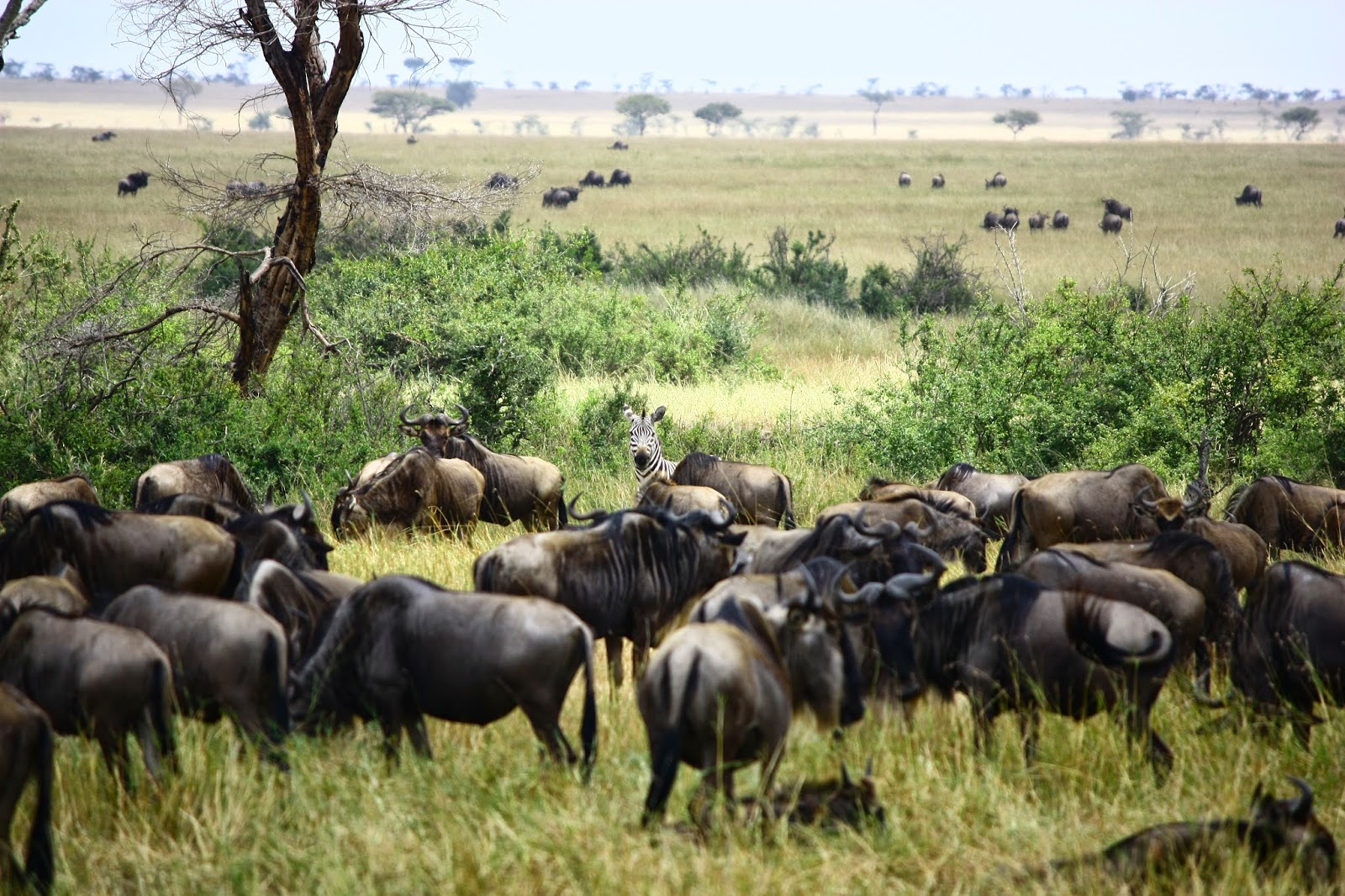We drove to the far north of the park one day with our guide Mosses and driver Emily. They had promised us wildebeests, and they were true to their word.
Somewhere between 1 and 2 million wildebeest and zebra participate in the annual migration from the southern part of the Serengeti, which is a wide, grassy plain, to the northern part and across the border into Kenya and the Masai Mara National Park. The southern part of the park gets lush green grass during the rainy season (usually beginning around November), but during the dry season (starting in May/June) there is very little for wildebeest to eat, so they migrate north to find water and better grass. This year, the migration started nearly a month earlier than usual, so the animals were much further north than we had expected/hoped.
Zebra and wildebeest are partners in the migration; according to guides, zebras have a better memory, and remember the route north. Wildebeest, however, have a better sense of smell, so they are useful for finding water along the route. The two end up traveling together.
It was interesting to see how truly organic and spontaneous the groups of animals are: there is no organized leader of any kind, just animals choosing to follow each other. They bunch up in groups, but we saw many spread out by themselves as well. Make sure to click through to see the most dense groups of wildebeest toward the end of the post (this was likely the second major group of wildebeest to pass through this area), as well as the mini-stampede we witnessed near the end of the day.
 |
| A wildebeest we spotted on our first day in the park; we thought it was a nice portrait. This animal likely won't make the crossing and go all the way north; he is in the Western Corridor and will probably just stay here, scrounging for grass with less competition, until going south again around November. |
 |
| Doing battle. |
 |
| The victor. |
 |
| Moving into bigger groups. At some point in this drive, we realized that all the dark spots on the ground in the distance were wildebeest, too. |
 |
| Now we are nearing the border with Kenya; we've already crossed the Mara river from the south. The hills in the distance of this picture are in Kenya. |
 |
| Some of the zebra traveling with this group. |
 |
| Now we are nearing the thick of things. |
 |
| Now we're turning back, retracing our tracks across the plain in order to head back south. Notice how the grass has literally been mown down by thousands of hungry mouths and hooves. |
 |
| Heading back south now, we are crossing the Mara river again. This is where you see crocodiles attacking wildebeest as they try to cross on nature television shows. |
 |
| A bit blurry, but you can see the number of wildebeest on the move. We caught the stragglers of the group. |
 |
| These giraffe weren't bothered in the slightest by the frantic wildebeest crossing their path. |
 |
| Now we're on a different day: we've left the Serengeti and have descended into Ngorongoro Crater. There were no wildebeest at all for miles and miles of plain, then we climbed a hill, drove down into the crater, and saw herds again. |

































No comments:
Post a Comment